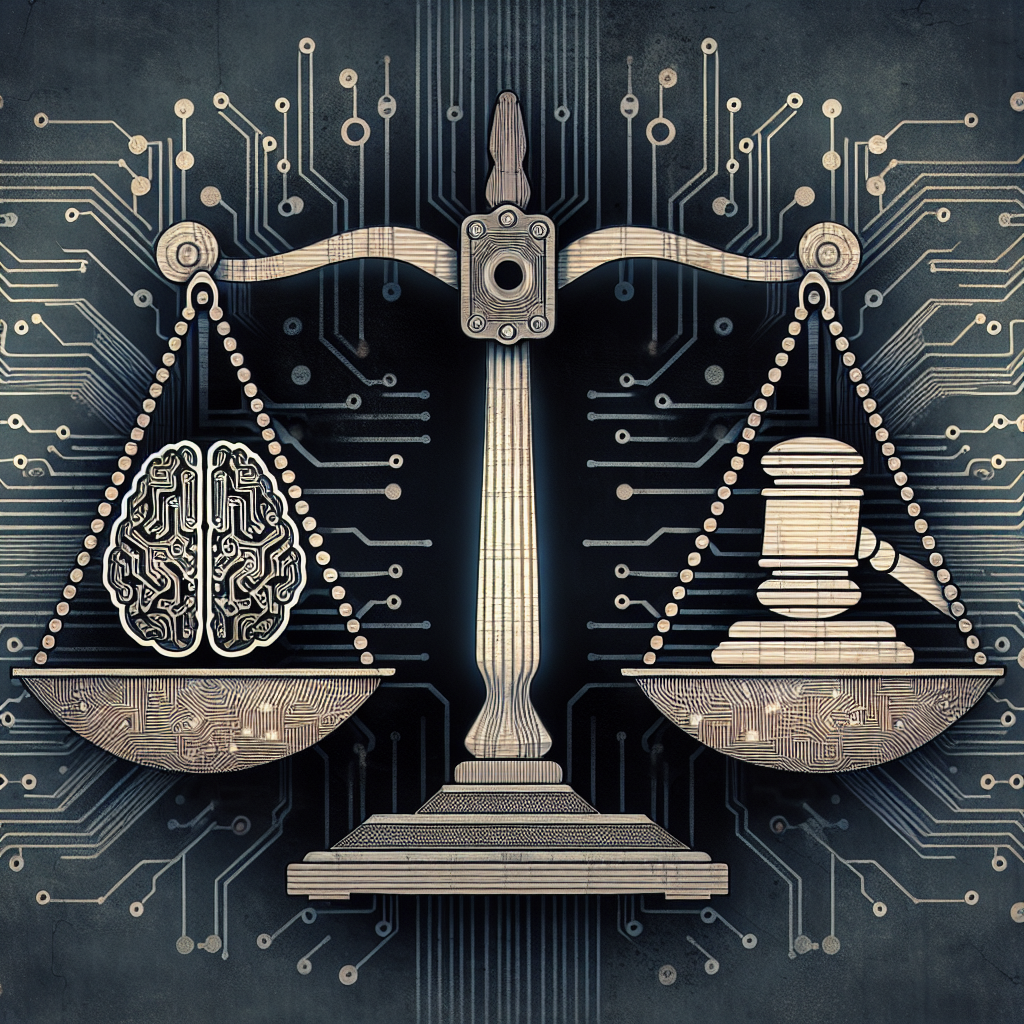Artificial intelligence (AI) has become increasingly prevalent in various industries, including the criminal justice system. While AI has the potential to improve efficiency and accuracy in decision-making processes, there are significant risks associated with its use, particularly when it comes to biases and discrimination.
One of the main concerns with AI in the criminal justice system is the potential for algorithmic bias. This occurs when AI systems are trained on biased data, leading to discriminatory outcomes. For example, if an AI system is trained on historical crime data that reflects racial biases in policing practices, it may perpetuate those biases by targeting certain groups for surveillance or harsher sentencing.
Another concern is the lack of transparency and accountability in AI decision-making processes. Unlike human decision-makers, AI systems operate using complex algorithms that are often difficult to understand or explain. This lack of transparency can make it challenging to identify and correct biases in AI systems, leading to unjust outcomes for individuals involved in the criminal justice system.
Additionally, there is a risk of over-reliance on AI in decision-making processes, which can lead to the erosion of human judgment and discretion. While AI can provide valuable insights and predictions, it should not be used as a substitute for human decision-making, particularly in cases where individual rights and liberties are at stake.
One of the most well-known examples of AI bias in the criminal justice system is the use of predictive policing algorithms. These algorithms use historical crime data to predict where crimes are likely to occur in the future. However, research has shown that these algorithms often reinforce existing biases in policing practices, leading to the over-policing of certain communities and individuals.
In addition to biases in AI algorithms, there is also a risk of discrimination against marginalized communities in the criminal justice system. For example, AI systems used in risk assessment tools may assign higher risk scores to individuals based on factors such as race, gender, or socioeconomic status, leading to harsher treatment and sentencing for these individuals.
To address the risks of AI in the criminal justice system, it is crucial to ensure that AI systems are developed and deployed in a transparent and accountable manner. This includes conducting regular audits of AI systems to identify and correct biases, as well as involving stakeholders from diverse backgrounds in the development and implementation of AI tools.
Furthermore, it is essential to establish clear guidelines and standards for the use of AI in the criminal justice system, including mechanisms for recourse and accountability in cases of unjust outcomes. By addressing these issues proactively, we can harness the potential of AI to improve the criminal justice system while minimizing the risks of biases and discrimination.
Frequently Asked Questions (FAQs):
Q: How can biases in AI algorithms be identified and corrected?
A: Biases in AI algorithms can be identified through regular audits and testing of the algorithms using diverse datasets. Once biases are identified, they can be corrected through retraining the algorithms on more representative data or by adjusting the algorithm’s parameters to mitigate biases.
Q: What role can policymakers play in addressing biases in AI in the criminal justice system?
A: Policymakers can play a crucial role in establishing guidelines and standards for the use of AI in the criminal justice system, including requirements for transparency, accountability, and fairness in AI decision-making processes. Policymakers can also promote the use of independent oversight and auditing mechanisms to ensure that AI systems are not perpetuating biases or discrimination.
Q: How can stakeholders from diverse backgrounds be involved in the development and implementation of AI tools in the criminal justice system?
A: Stakeholders from diverse backgrounds, including community members, advocacy groups, and legal experts, can be involved in the development and implementation of AI tools through consultation, feedback, and collaboration with AI developers and policymakers. By including diverse perspectives in the decision-making process, we can ensure that AI tools are designed and implemented in a way that is fair and equitable for all individuals involved in the criminal justice system.
Q: What are some best practices for using AI in the criminal justice system to minimize biases and discrimination?
A: Some best practices for using AI in the criminal justice system to minimize biases and discrimination include:
– Ensuring that AI algorithms are trained on diverse and representative datasets
– Conducting regular audits and testing of AI systems to identify and correct biases
– Establishing clear guidelines and standards for the use of AI in the criminal justice system
– Involving stakeholders from diverse backgrounds in the development and implementation of AI tools
– Promoting transparency and accountability in AI decision-making processes
– Using AI as a tool to augment, rather than replace, human judgment and discretion in the criminal justice system.
In conclusion, while AI has the potential to improve efficiency and accuracy in the criminal justice system, there are significant risks associated with its use, particularly when it comes to biases and discrimination. By addressing these risks proactively and implementing best practices for the use of AI in the criminal justice system, we can harness the potential of AI to improve the system while ensuring fair and equitable outcomes for all individuals involved.

